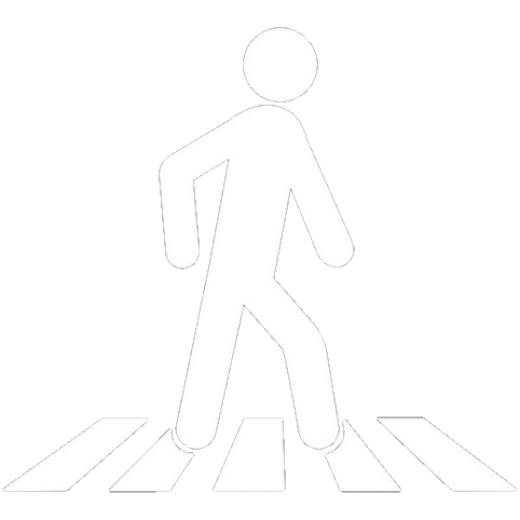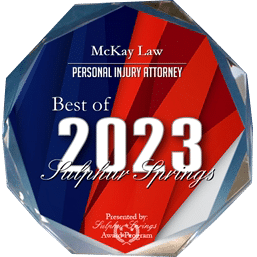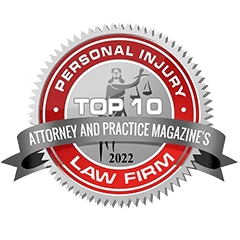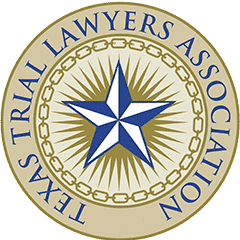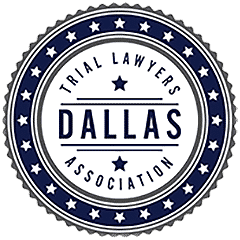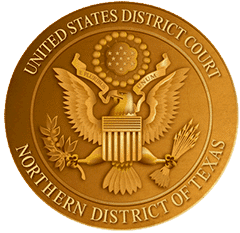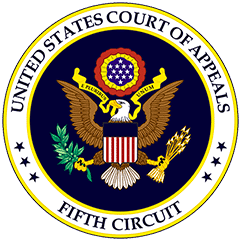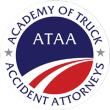Our team at McKay Law has gathered several critical evaluation factors that will affect your injury case. Let’s have a look at them together.
Download The eBook Instantly
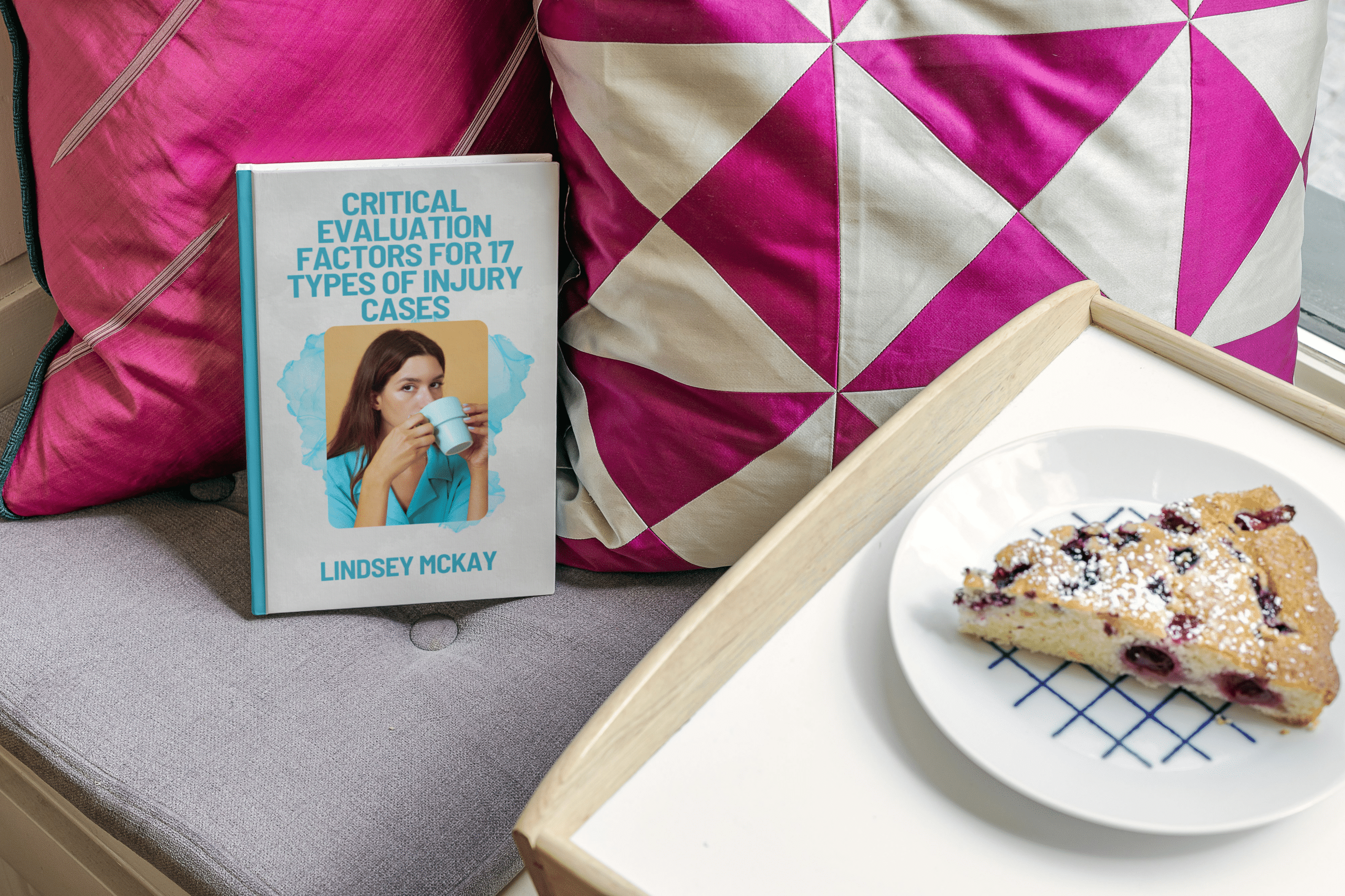
Vehicle Accidents
1. Rear-End Collisions
Rear-end collisions are one of the most common types of auto accidents. Most occur when the stopped vehicle is waiting in traffic, waiting to turn left or right, or waiting for a light to change.
The police report will frequently place fault on the moving vehicle, usually for following too closely or for inattentiveness. The driver of the moving vehicle will often admit liability to the police officer, you, or other witnesses.
Insurers usually pay considerable attention to police reports. However, sometimes carriers or their defense attorneys will claim no liability due to sudden and unexpected stopping, failure to signal when stopping to turn, not yielding before pulling into traffic, or brake defect.
An experienced injury attorney will want to learn about the following items when assessing the certainty of liability in your rear-end collision:
- Vehicle position. Was your car stopped in traffic, waiting for a light to change, turning left or right, slowing down for traffic, waiting to turn into a driveway, etc.?
- The other driver’s speed. What was the approximate speed of the vehicle that struck yours?
- His or her following distance. Did you see how far away the colliding vehicle was before the crash?
- Your use of turn signals. If you were about to turn, did you have your turn signal on? For how long?
- The vehicle damage. Is the damage to each car minimal, moderate, or severe? Do you have any pictures?
- Any driver statements. Did either you or the other driver say anything about fault at the scene?
- The existence of witnesses. Were there any impartial witnesses to the accident?
- Any alcohol use. Were either you or the other driver drinking prior to the accident?
- Any credible passengers. Did either car have other riders? How persuasive are their accounts of the accident?
- The driving conditions. Was the road slippery due to rain or snow? Was it sunny, dark, foggy, or stormy?
- The functioning of your lights. Were your signal and brake lights working?
- Any defenses. Is the insurer suggesting that a brake defect, icy conditions, sun in the eyes, your failure to signal, or the like are to blame? Can the insurer prove it?
2. Intersection Accidents
For these four reasons, it can be difficult to prove liability in intersection collisions and failure to yield accidents:
- Shifting story. The driver at fault often denies liability and changes the facts when interviewed by police and his or her insurance adjuster.
- Absence of witnesses. The witnesses usually continue on their way without stopping to give their names to the police.
- Detailed rules of the road. The laws regarding intersections, signals, and yielding to other traffic can be complex.
- Artful defense. Insurance adjusters and defense attorneys are usually able to find or create some element of negligence on your part that will reduce settlement value.
The following factors will affect the strength of your liability case in intersection and failure to yield accidents:
- The police report. What did the investigating officer say about driver’s fault?
- The applicable rules of the road. What do the governing regulations say about how your accident occurred?
- Any driver statements. What did you and the other driver say after the accident?
- Any witnesses. What do the witnesses named in the police report say about the accident?
- The scene of the accident. What is indicated by the skid marks, position of traffic lights, street signs, and other evidence at the scene of the accident? A warning signal can be important evidence of liability.
- Conditions at the time of the accident. Were weather or road conditions a factor in the accident?
- Any intoxicants. Had either driver been drinking or using drugs before the crash?
- Any claimed mechanical defect. Is the insurance carrier raising the issue of an unknown mechanical problem to deflect liability?
- Conflicting stories. If the only evidence of what happened is testimony from you and the other driver, the case is likely to be difficult. Even if the other driver admitted fault at the scene, insurers have been known to persuade drivers to change their stories.
3. Parked or Disabled Vehicles
A number of factors can make or break your case when you have collided with a parked, stalled, or disabled vehicle:
- Reason for stop. What caused the driver to leave his or her vehicle in a dangerous position? Was the vehicle stuck or disabled, or did the driver deliberately leave the vehicle?
- Availability of better location. Could the accident have been avoided if the driver of the stopped vehicle had picked a safer location to stop?
- Warnings. What type of warning signal, if any, did the driver turn on or place on the roadway?
- Roadway condition. Did a curve, hill, bad weather, or other visual impediment affect the view of approaching motorists?
- Your negligence. Were you speeding, inattentive, alcohol-impaired, or using defective or poorly adjusted equipment? Did you have a last chance to avoid the accident?
- Statutory violation. Did any statutes or signs prohibit the other driver from stopping or parking where the accident occurred?
4. Auto vs. Pedestrian
The overriding factor in pedestrian cases is whether you were walking in a crosswalk when hit. If not, the insurance company and its defense attorney will present a jaywalking defense and obtaining a favorable settlement or verdict will be difficult … but not impossible. The following liability factors should be examined carefully when assessing an auto vs. pedestrian case:
- Reason for jaywalk. Was something (construction, snow) impeding access to the crosswalk? Was there no crosswalk nearby?
- Governing traffic code. What do the regulations say? Were either the driver or you, the pedestrian, violating a statute or regulation at the time of the accident?
- Length of walk signal. Check the timing of the traffic lights at the time the accident occurred. Do they provide enough time for pedestrians to cross the street?
- Available light. What were the lighting conditions at the time of the accident? Was it easy or difficult for the driver to see you, the pedestrian?
- Visibility of clothing. Did the clothing you were wearing make it harder or easier to see you? Save the clothing you were wearing when hit.
- Driver statements. What did the driver say immediately after the accident? While drivers who hit other cars seldom make incriminating statements, drivers who hit pedestrians will frequently speak to victims lying on the ground after being hit.
- Pedestrian statements. Conversely, did you say anything to the driver after the accident?
- Witnesses. Did anyone else see the accident? Do you know how to contact them?
- Driving speed. How fast was the driver going? What was the speed limit? Was the driver proceeding too fast for pedestrian or car congestion at the time?
- Driver knowledge. Was the driver familiar with the area?
- Weather conditions. Was it foggy, rainy, misty, or snowy at the time?
- Mechanical defect. Did any relevant mechanical problems affect the driver’s car? If so, did the driver know about them beforehand?
- Impeded view. Were there any external obstructions to the driver’s view like signs, fences, shrubbery, or trees?
- Tardy driver. Was the driver late for work or an appointment?
- Child victim. If the case involves a child pedestrian, analyze:
- Do any recreational sites nearby put drivers on notice that children are frequently present?
- Do any nearby signs warn of the presence of children?
- Were other children with the victim at the time of the accident? What do they say about the incident?
- Was a supervising adult around at the time? What was he or she doing in the minutes and seconds before the accident?
5. Auto vs. Bicyclist
Bicycle riders are generally required to observe the same rules, regulations, and safety standards as car drivers. Stopping at signals, yielding the right of way at intersections, and using turn signals are as important for cyclists as motorists.
However, many bicycle cases are lost because bicyclists fail to follow the same safety standards required of motorists.
The following liability factors should be examined carefully when assessing an auto vs. bicyclist case:
- Designated riding area. Were you riding in a lane set aside for bicycles?
- Reckless riding. Just prior to impact, were you riding against traffic, performing stunts, or otherwise riding recklessly?
- Safety equipment. At the time of the accident, did your bicycle have the required lights and reflectors?
- Police assessment. Does the police report place responsibility on either the driver or the bicyclist?
- Available light. What were the lighting conditions at the time of the accident? Was it easy or difficult for the driver to see you, the bicyclist?
- Visibility of clothing. Did the clothing you were wearing make it harder or easier to see you? Save the clothing you were wearing when hit.
- Driver statements. What did the driver say immediately after the accident? While drivers who hit other cars seldom make incriminating statements, drivers who hit bicyclists will sometimes speak to victims lying on the ground after being hit.
- Bicyclist statements. Conversely, did you say anything to the driver after the accident?
- Degree of injury. How serious are your injuries? Jurors are not as sympathetic to bicyclists as motorists because of the inherent danger of bicycle riding.
6. Truck Accidents
Most truck accidents cause serious injuries because of the weight of the truck and the resulting force at impact. Nonetheless, truck accident cases frequently face several obstacles to successful resolution:
- Experienced and difficult adjusters. Insurers often use their better and tougher adjusters in truck accidents, and those adjusters can take a hard line during settlement negotiations.
- Biased witnesses. Witnesses often sympathize with truck drivers.
- Dishonest trucking personnel. Trucking companies and drivers sometimes falsify or “lose” records that could help your case.
- Multiple defendants. You’ll likely face several opponents, all of whom will be trying to pin some blame on you.
- Passage of time. The investigation must begin promptly in truck accident cases. You will be at a disadvantage if months have passed between the accident and you retaining an attorney.
Potential areas of liability which should be considered in every truck accident are:
- Excessive speed. Evidence of speeding can include: admissions by the driver, physical evidence such as skid marks, damage from the impact, newspaper photos, logs seized by the police officer, and other records.
- Violation of safety regulations, including ordinary traffic laws and municipal ordinances.
- Defective equipment. Maintenance and inspection documents, repair bills, and towing records can provide helpful evidence.
- Visibility. Was the relevant windshield, mirror, or signal so dirty that it affected visibility?
- Inexperience. Was the driver inadequately trained?
- Overloading. Logs, weigh station checks, bills of lading, and shipping instructions can show improper weight.
- Improper parking. Did the truck park illegally and obstruct the vision of other vehicles?
- Unsafe turn. Many incidents occur when a truck has straddled lanes and turned without proper signals or warning lights.
Premises Liability
7. Slips and Falls
Juries can be hesitant to find a business or person liable for a fall unless they are convinced that the fall occurred due to negligence of the premises owner.
- Witnesses. Did other people see the fall? What do they say?
- Prior incidents. Has anyone else fallen on the premises?
- Previous complaints. Did anyone complain about the condition of the property prior to your fall?
- Nature of use. Are the premises residential, business, public, or municipal? The duty owed to visitors can vary with the property use.
- Responsible party. Does a lease specify that the tenant and not the landlord is responsible for the condition of the property?
- Type and condition of shoes. Did your shoes contribute in any way to the fall? You should preserve the shoes you were wearing when you fell.
- Weather. Was bad weather a factor?
- Visibility. Was the lighting poor?
- Type and condition of surface. Was it uneven, steep, slippery or otherwise difficult to navigate?
- Warnings. Were any warning signs present? Should they have been? Are they now present?
- Repairs. Were any changes made to the scene after the incident?
- Distraction. What were you doing immediately prior to the fall? Were you carrying anything? Talking? Looking elsewhere? Mentally distracted? On your cell phone? Performing any act that may alter the liability situation?
- Alcohol or drugs. Did you have anything to drink or take any drugs before your fall?
- Physical condition. Do you have an impairment that may have made you more susceptible to a fall?
8. Stairway Falls
Stairway fall cases can be challenging. Jurors often see the plaintiffs as partially negligent, and it can be difficult to determine or re-create exactly how the fall occurred.
The following factors will help determine whether liability is strong in your stairway fall case:
- Defects. Do you see anything irregular or uneven about the stairs like varying width, depth, or riser height? Loose handrail? Worn surface? Defects in the nosing?
- Clutter. Did a loose object on the stairway cause the fall (roller-skate, golf ball, tool, etc.)?
- Lighting. Was the stairway poorly lit?
- Repairs. Were any changes made to the stairway after your fall?
- Distraction. What were you doing immediately prior to the fall? Were you carrying anything? Talking? Look- ing elsewhere? Mentally distracted? On your cell phone? Performing any act that may alter the liability situation?
- Alcohol or drugs. Did you have anything to drink or take any drugs before your fall?
- Physical condition. Do you have an impairment that may have made you more susceptible to a stairway fall?
9. Falling Objects
Falling-object cases are easier to win than slip and fall cases because:
- Clear fault. The plaintiff is rarely negligent.
- Sudden and serious. The incident is usually traumatic because it happened quickly and without warning. The injury is also frequently painful and serious.
- Sympathetic jurors. Jurors consider falling-object plaintiffs unfortunate victims of circumstances over which they had no control.
The following items are helpful to the analysis of a falling-object case:
- Photographs or diagrams. Create a drawing or picture showing the exact position of you and the object prior to its fall.
- The object. A sample or photograph of what fell will be useful evidence.
- Inspections. Did any responsible party or employee inspect or have an opportunity to inspect the area prior to the incident?
- Warnings. Were any warning signs present prior to the incident? Are they now present?
- Prior incidents. Has anyone else been hurt by a falling object on those premises?
10. Animal-Attack Cases
Animal cases often have jury appeal. The injuries are usually easy to prove, and pre-existing conditions are not a factor. When evaluating your case, answers to these questions will be important:
- Breed. Was the attack by a dangerous breed of dog like Rottweiler, German Shepherd, Doberman, or Pit Bull?
- Witnesses. Who saw the attack? What do they say?
- Photos. Do you have good photos of the injuries taken close in time to the attack? If not, is there still time to take them, or have the injuries healed?
- Actions of defendant. Did the animal owner apologize and cooperate? Or did he or she get defensive and blame you for the attack?
- Prior bites. Has the dog bit other people or animals?
- Provocation. Did you do anything to provoke the dog?
11. Inadequate Security
Four key issues are present in most inadequate security cases:
- Did the property owner or manager have actual or constructive notice of the potential harm to you, the victim of the crime?
- Was the crime foreseeable?
- Was the crime preventable?
- How many, if any, prior similar crimes have taken place at the same location?
Getting more specific, if the crime occurred in a residential setting such as an apartment or condominium complex, did the property owner or manager…
- Negligently hire or retain a violent employee?
- Fail to repair a lock, fence, light, or other security device that could have protected you?
- Have an opportunity to warn you of the potential danger?
- Fail to maintain or provide security measures that are required by the terms of your lease?
If the incident occurred at a commercial establishment, like a restaurant…
- Was the lighting sufficient?
- How many other criminal acts have taken place at that location?
- Should security cameras have been available?
- Were employees trained to deal with potential assaults? Did they have the opportunity to head off or defuse the situation?
Government Entities
12. Claims Against a Public Entity
Most claims involving a municipality, school district, municipal transportation company, state, or other public entity will be vigorously defended and are difficult to win.
In some cases, the claims are precluded completely by statute. In others, the statutes have been interpreted to require strict compliance with the stated procedures. A single error in timing, form, or substance can preclude any recovery.
The rationale behind these acts is that the public entity needs reasonably specific notice about a claim in order to investigate and process it. Supposedly, such prompt investigation allows governmental officials the opportunity to evaluate the claim, and, if appropriate, enter into a prompt settlement, thereby avoiding the cost of suit.
Unfortunately for victims, the statutes also act as a strong mechanism for denying or vigorously defending claims. When evaluating a potential claim against a public entity, ask:
- Notice. Has official notice been given to the public entity by the claimant or the claimant’s representative? If so, to whom was such notice given, how was it served or delivered, was it acknowledged, and has it been assigned to a particular person or department?
- Tardy claim. If no notice has been given, is the claim timely within both the statute of limitations and the statute requiring notice within a certain period of time?
- Elements of claim. What are the details of the incident, including:
- The name or title of the person causing the injury
- Where the injury took place
- Circumstances of the injury such as a fall, a playground incident, school incident, or traffic accident
- The injury sustained
- The amount of medical bills incurred to date
- The loss of income suffered so far
- Whether or not there has been an acknowledgment of the incident
- The name of any person who has investigated the claim
- The name of any insurance carrier who may have entered an appearance
- The names of physicians and medical providers who have dealt with the injury
13. Police Misconduct
Claims against police officers are frequently made, but most go no further than an initial investigation and then are swept under the carpet. Right or wrong, police departments bend over backwards to protect their officers because frivolous claims of police brutality are so common. The few claims that have merit often get lost in the shuffle.
Jurors will be sympathetic to police officers except in the most extreme cases. If a husband gets roughed up by a police officer investigating a domestic dispute, the jury is likely to sympathize with the officer who got thrust into a difficult situation and had to restrain the husband.
Answer these questions to determine if your claim has merit:
- Timely claim? When did the incident happen? The notice of claim statute and the statute of limitations will block old claims.
- Shared blame? Why were you involved with the police in the first place? Try to look at the events neutrally, as would a jury which rarely has problems with the police.
- Criminal record? Have you been arrested or convicted? If so, what for and how many times? The jury is unlikely to include anyone with a criminal record.
- Status of police investigation? Has a formal complaint been filed with the police department? If so, has any action been taken and what were the results of such action?
Other Cases
14. Children and Minors
Cases involving children can be difficult — the child may not be a good witness, insurers sometimes refuse to settle if negligence by the child or parent was a contributing cause, and a judge needs to approve any settlement.
The following factors should be examined when a child is the victim of an accident:
1. How strong is liability? Automobile accident cases are probably the easiest because, as a passenger, the child would not be comparatively negligent. Premises liability cases are more difficult, and product liability cases are the worst. Medical malpractice cases involving minors require substantial injuries because they are so costly to prosecute.
2. How good are the liability witnesses? The best witnesses are objective, disinterested adults, such as playground supervisors, teachers, or disinterested observers. Articulate children can also be good witnesses. Parents of the victim can be either the best or worst depending upon personalities.
3. Can your child explain the incident? If not, good eyewitnesses will be needed.
4. Parental negligence. Will the defense be able to argue negligence on the part of the parents? Insurers hate to pay money if blame can be placed with the parents. Try to look at the case neutrally, as parents on the jury will.
5. Medical situation.
- Will there be any future medical bills?
- Is there any element of permanency to the child’s injuries?
- Is there any permanent disfigurement such as a scar or burn mark?
- Will the injury have any effect on the child’s ability to attend school, athletics, or extracurricular activities?
15. Food Poisoning
Food poisoning cases require a credible victim and adequate medical support. Insurers will require clear proof of causation.
An experienced injury attorney will consider these factors when evaluating your case:
- Are you believable? Your attorney is likely to ask you:
- have you filed an insurance claim before,
- how financially well off are you,
- do you have witnesses who saw you consume the food, and
- are you prepared to tell a judge and jury under penalty of perjury that you indeed had food poisoning caused by the defendant?
- Are the witnesses credible? Are their stories consistent? Will a jury believe them?
- Do you have an employee on your side? Will an employee of the defendant testify for you? Can the employee attest to serving a meal that may have had contaminants in it? Have there been any other problems that the employee knows about?
- What is the timing? How much time passed between consumption and illness?
- Was the problem actually an allergic reaction? Insurers will not pay for a claim for food poisoning if, in fact, it was actually an allergic reaction. Do you have a food allergy that may have caused the problem?
- What were the symptoms? Food poisoning results in certain symptoms that can be similar to the flu, morning sickness, upset stomach, or just pain nausea. Be sure that what you had was food poisoning and not some ordinary sickness.
- What did you consume beforehand? Do you know the exact foods you ate in the 24 hours before your symptoms began? If the case proceeds to litigation, that will be question #1 of the interrogatories.
- What are the injuries? You should have had at least one medical visit and an injury or problem worth making a claim for.
- How good is your medical support? The doctor’s notes, emergency report, or narrative medical report should specify what caused your food poisoning. Does the report indicate any skepticism? Know that the insurer will scrutinize the report.
- Are your expectations reasonable? Food poisoning cases are difficult to value and you will need to accept any reasonable offer from the defense. Rarely are damages sufficient to justify a trial.
16. Intentional Torts
Intentional torts come in a wide variety of case types, including: defamation, malicious prosecution, false imprisonment, assault and battery, abuse of process, tortious interference with contractual rights, trespass, intentional misrepresentation, and invasion of privacy.
Proving liability is the first hurdle. However, it is important to also consider damages, the defendant’s ability to pay, and party credibility. Intentional tort cases often have the element of the bad defendant, but damages may be difficult to prove… especially in cases of defamation, malicious prosecution, abuse of process, and false imprisonment. The most attractive cases involve assault or false imprisonment against commercial establishments.
A good intentional tort case will have clear liability and either a wealthy defendant or an element that brings the case under the perpetrator’s insurance. Important factors to consider when evaluating these cases are:
- Identity of defendant. Who are the potential defendants in the case? Is there a principal/agency relationship? Is the defendant a corporation, business, homeowner, or partnership? How many potential defendants can be brought into the case?
- Agency and authority. Was the perpetrator acting on behalf of someone else and within the scope of his authority (such as a bouncer in a bar)? Is the principal/agency relationship a strong one?
- Conduct. How malicious was the conduct of the perpetrator? Is there any element or possibility of negligence rather than a completely intentional tort? Are punitive damages appropriate?
- Witnesses. How reliable are the witnesses to the conduct? How many witnesses viewed the incident? Are the witnesses related to the plaintiff or are they totally neutral and impartial?
- Place of occurrence. In what type of establishment or institution did the incident occur? Was it a social event or was it a business situation?
- Your conduct. Did you do anything to provoke the incident? Could you have prevented the incident from happening?
- Alcohol or drugs. To what extent was the perpetrator impaired? How intoxicated were you? Had either the perpetrator or you consumed any drugs?
- Admissions. Were any admissions made by the perpetrator, such as, “I’m sorry I hit you”?
- Criminal prosecution. Were there any charges brought against the perpetrator for the conduct asserted? Did the defendant plead guilty or not guilty in criminal court? What was the final disposition in criminal court?
17. Nursing Homes
Nursing home cases are usually well received by juries, and many draw large verdicts. Why? A perfectly innocent person has been badly mistreated because a proprietor is trying to save some payroll dollars.
Nursing home neglect is usually caused by inadequate staffing, which can trigger problems like:
- Improper sanitation in food service
- Failure to treat pressure sores
- Failure to prevent certain injuries such as falls and burns
- Inadequate care plans
- Poor quality of care on a day-to-day basis
- Inadequate or inaccurate resident assessment
Damages can be a difficult aspect of nursing home cases because of the advanced age of the victim. The defense’s strongest arguments are: (1) the victim had pre-existing injuries or conditions, (2) was of such advanced age that the life expectancy is or was short, and (3) that the real plaintiffs are relatives who may inherit the settlement.
Your attorney will need to demonstrate the importance of quality care, no matter how long or short the stay in a nursing home. If the victim has or had a life expectancy of a year or two, why should those last several hundred days have been spent in misery, pain, degradation, and loneliness?
The following types of cases are likely to result in larger damages:
- Pressure sores. If you have ever seen a picture of some- cases is that the sores were caused by the neglect of the one with Stage III or IV pressure sores, you understand nursing home.
the large awards. The most difficult thing to prove in these - Unmanaged pain. The pain medication records will show how often pain medication was actually administered to your client. If your attorney can document that your client was in constant or frequent pain, he or she will have much to argue about for damages.
- Malnutrition and dehydration. In many of these starvation cases, the patient actually goes through both malnutrition and dehydration, which in turn can produce decubitus ulcers. The records should document fluid and food intake.
- Loss of dignity. Here, the victim has been lying in soiled bed linens, has developed large sores, eats horrible food, or is not provided with entertainment or exercise. Proof will come from before and after videos, testimony from relatives, friends, or co-workers, and photographs of the conditions.
- Physical or sexual assault. The facility will argue that it had no notice of the guilty party’s propensities. However, the majority of intentional assaults are perpetrated by employees whose background checks were underway but incomplete.
- Wandering. These cases occur when a patient gets lost and then becomes disoriented or eventually injured because of poor supervision or monitoring by the facility. Wandering is common behavior for patients experiencing dementia, and a properly-managed nursing home will take steps to protect these residents.
Get a Free Case Consultation
Before you negotiate or sign anything, learn your rights and how to protect yourself and your family. A personal injury lawyer can talk to you about your legal options, how to avoid common mistakes, and how to maximize your claim.
Contact McKay Law now to discuss your case at (903) INJURED / (903) 465-8733 or (903) ABOGADA / (903) 226-4232. The consultation is free, and there is no obligation. NO FEES UNLESS WE WIN!












